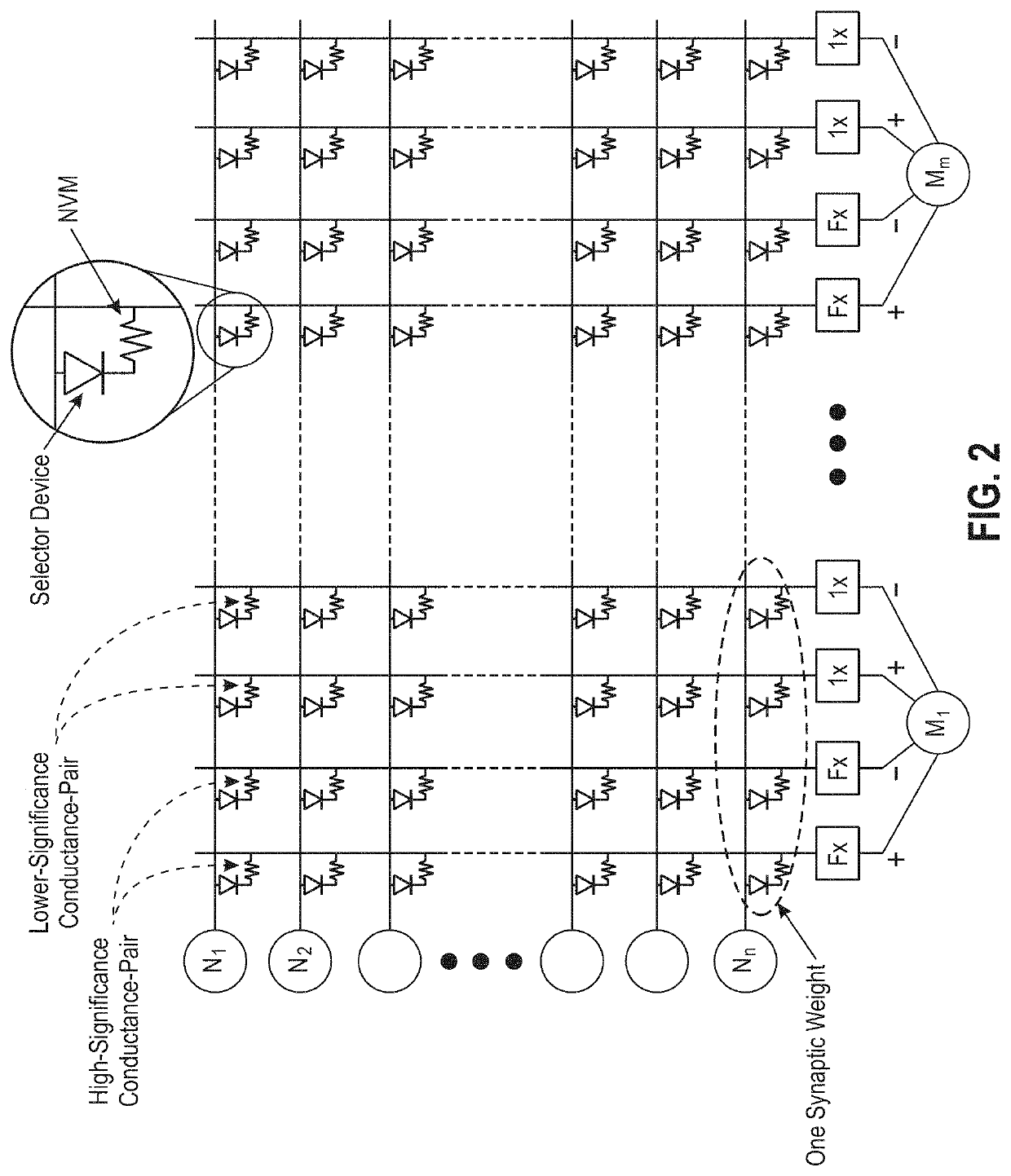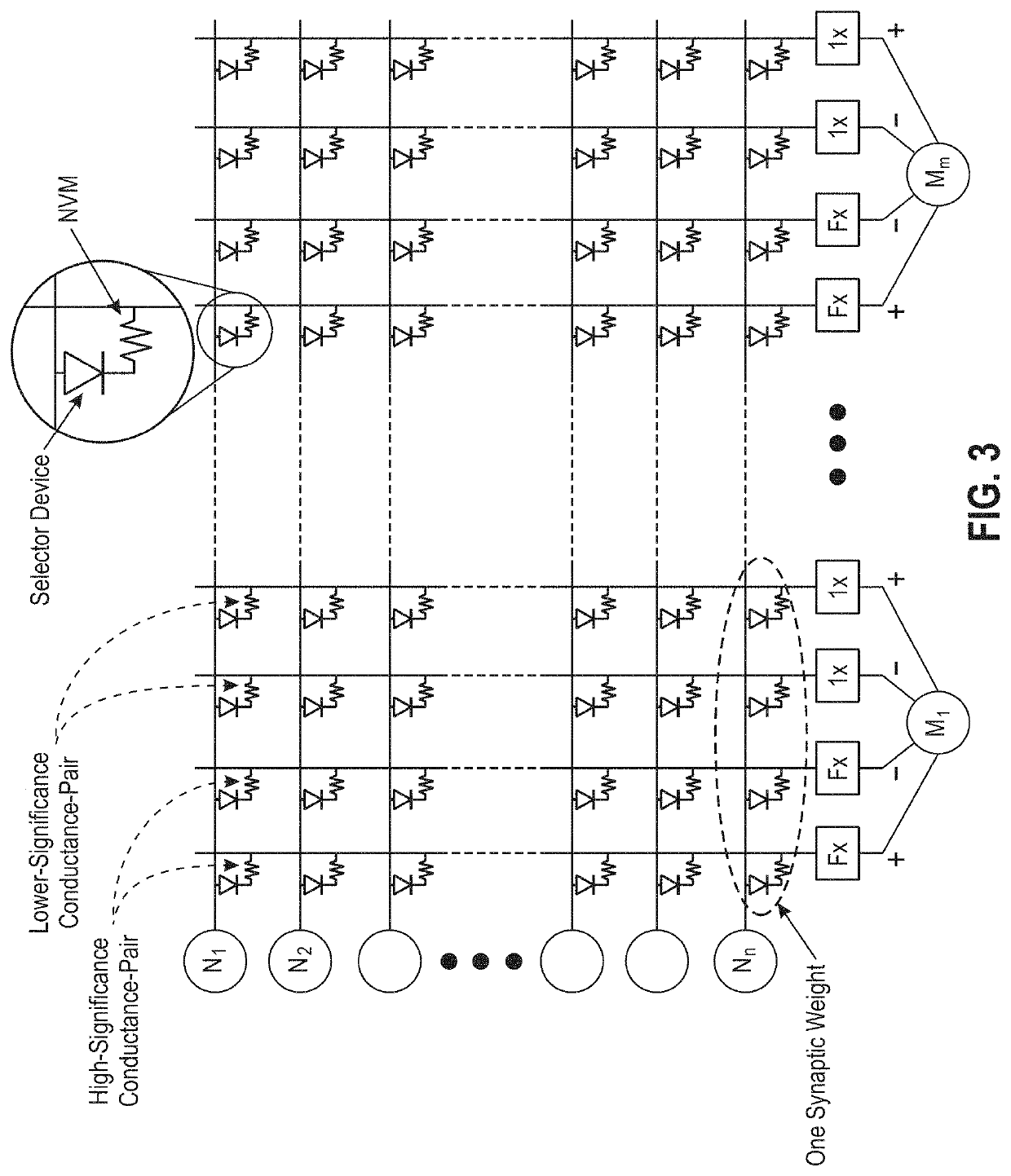Synaptic weight transfer between conductance pairs with polarity inversion for reducing fixed device asymmetries
a technology of conductance pairs and synaptic weights, applied in biological neural network models, instruments, computing, etc., can solve the problems of reducing network performance, limiting the maximum conductance it can achieve, and reducing the accuracy of mnist digit recognition problems, so as to achieve the effect of reducing the contribution of undesired weights
- Summary
- Abstract
- Description
- Claims
- Application Information
AI Technical Summary
Benefits of technology
Problems solved by technology
Method used
Image
Examples
Embodiment Construction
[0021]While this invention is illustrated and described in a preferred embodiment, the invention may be produced in many different configurations. There is depicted in the drawings, and will herein be described in detail, a preferred embodiment of the invention, with the understanding that the present disclosure is to be considered as an exemplification of the principles of the invention and the associated functional specifications for its construction and is not intended to limit the invention to the embodiment illustrated. Those skilled in the art will envision many other possible variations within the scope of the present invention.
[0022]The invention described here builds upon an earlier disclosure of a technique for mitigating the effects of nonlinearity and asymmetry in conductance response by distributing the synaptic weight across multiple pairs of conductances, each of varying significance. Each pair contributes in the usual way towards synaptic weight through the differenc...
PUM
 Login to View More
Login to View More Abstract
Description
Claims
Application Information
 Login to View More
Login to View More - R&D
- Intellectual Property
- Life Sciences
- Materials
- Tech Scout
- Unparalleled Data Quality
- Higher Quality Content
- 60% Fewer Hallucinations
Browse by: Latest US Patents, China's latest patents, Technical Efficacy Thesaurus, Application Domain, Technology Topic, Popular Technical Reports.
© 2025 PatSnap. All rights reserved.Legal|Privacy policy|Modern Slavery Act Transparency Statement|Sitemap|About US| Contact US: help@patsnap.com



